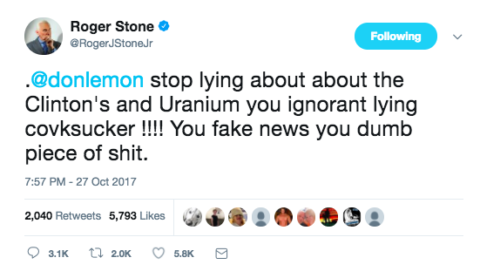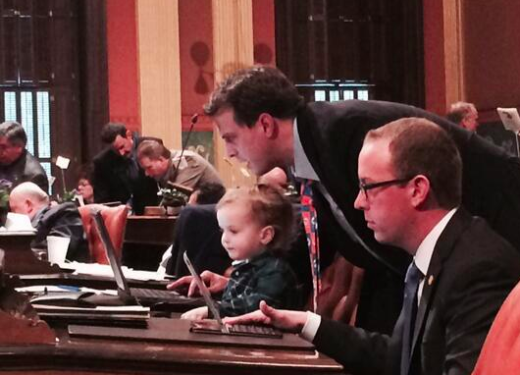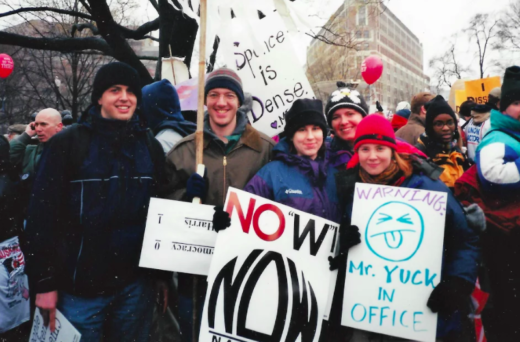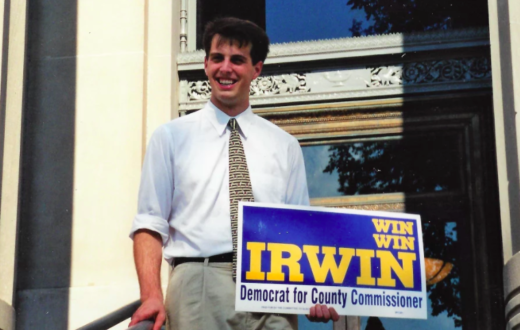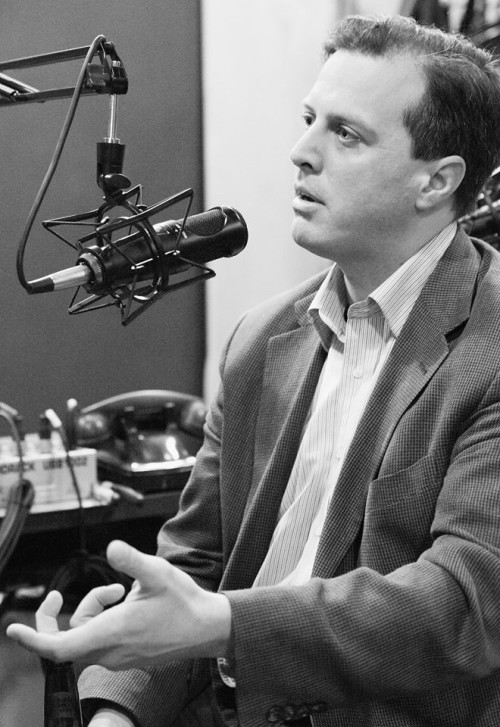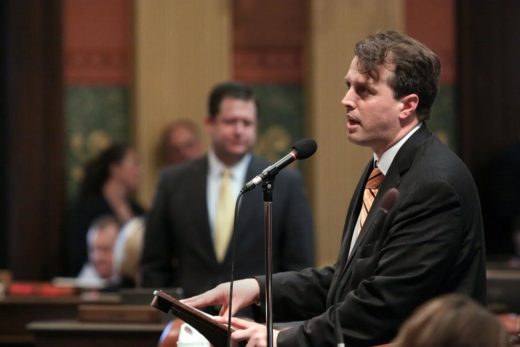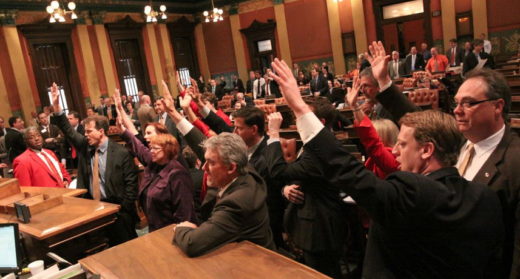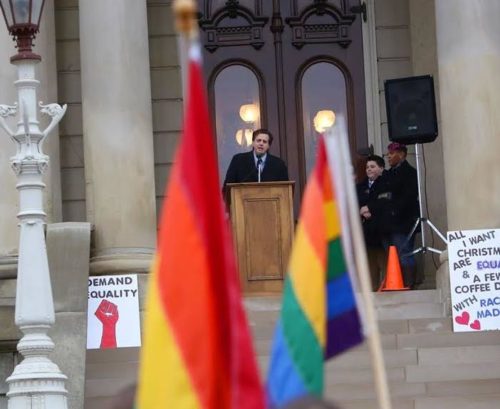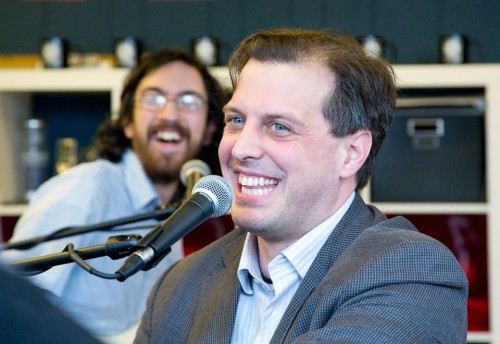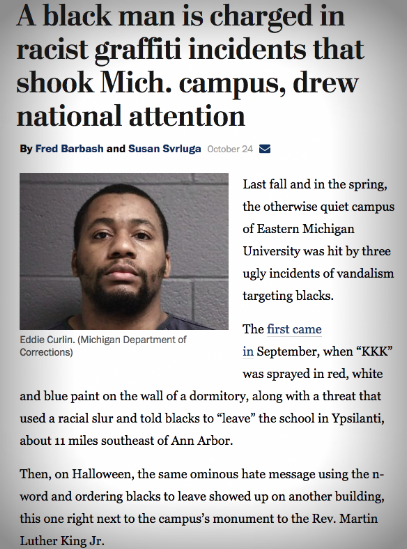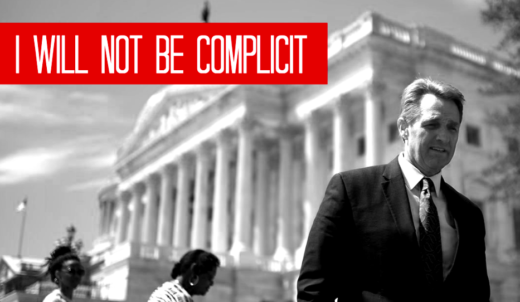On the evening of Tuesday, October 17, members of the Ypsilanti Community Schools Board of Education, without any public debate, voted 4-2 in favor of a plan to hand over control of Ypsi’s Washtenaw International Middle Acadey (WIMA) to the Washtenaw Educational Options Consotrium (WEOC), the organization that currently operates the regionally-funded, and Ypsilanti-based Washtenaw International High School (WIHI). This decision was controversial for a number of reasons, many of which we discussed here a few days ago. Not only would it take a popular and growing academic program away from YCS at a time when the district was just beginning to grow after decades of decline, but it may mean that fewer children in the district’s recently opened Ypsilanti International Elementary School (YIES) would be able to advance to WIMA after leaving the 5th grade. [If WIMA becomes a WEOC school, it stands to reason that there would eventually be fewer slots available to Ypsilanti children, as spots would be held for students from other WEOC partner districts.] With all of this in mind, I asked Washtenaw Intermediate School District Superintendent Scott Menzel, and Assistant Superintendent of Achievement and Systems Support Naomi Norman, to join me for a conversation about the history of Ypsilanti’s three International Baccalaureate programs, and why they’re now advocating for WIMA, the IB Middle Years program, to be taken over by the WEOC. I suspect we won’t cover everything you might have questions about, but my hope is that this is just the first of many such conversations on the future to public education in Ypsilanti.
MARK: If it’s OK with you, I’d like to start right at the beginning… What was the impetus behind establishing the Washtenaw International High School (WIHI) in Ypsilanti?
SCOTT: WIHI emerged out of a conversation with superintendents in the county who were interested in expanding educational options for students. You may recall that the Early College Alliance at Eastern Michigan University was already in existence as a Consortium program (not all districts were participants at that time), so a model for developing collaborative educational programming in the county was in place. The planning for WIHI took place before I came on board at WISD.
MARK: And why was Ypsilanti chosen as the location?
SCOTT: There was intentionality around locating the program in Ypsilanti and a recognition that putting a rigorous educational option in an area with high concentrations of poverty represented an opportunity to address inequities in the county and create viable options for those who might otherwise not be able to participate if the program were located in one of the other districts.
MARK: Would I be right to assume that, in your opinion, those inequities in the county still exist, and, as such, you still believe it’s important to have the WIHI in Ypsilanti?
SCOTT: Yes. The Opportunity Index illustrates where we have areas of low opportunity across the county by census tract and the inequities are exposed in very clear ways through the data on that site. In my estimation, it is very important to keep WIHI in Ypsilanti.
MARK: Maybe it would be useful, before we get too much deeper into this, to get an understanding of the various entities we’ll be discussing. When you referred earlier to the “Consortium,” what were you referring to?
SCOTT: The Consortium is short for the Washtenaw Educational Options Consortium (WEOC) and it’s a legal agreement entered into by all nine public school districts and Washtenaw ISD for the purposes of providing educational options for high school students in Washtenaw County. Currently there are three programs that are operated by the WEOC–Washtenaw International High School (also known as WIHI), the Early College Alliance @EMU, and Washtenaw Alliance for Virtual Education (WAVE). The fiscal agent for the Consortium is the Washtenaw ISD, but WISD only has one vote as part of the Joint Steering Committee–the group that governs the Consortium. The programs offered through the Consortium are programs of each district and are marketed as such to prospective students… I believe seven districts initially signed up to send students to WIHI.
MARK: So, in terms of governance structure, it’s straight majority rule with each of the nine district superintendents and you, the Superintendent of WISD, having a single vote?
SCOTT: Correct
NAOMI: Just to clarify a couple points here… At the time that we started WIHI, there were ten school districts in the county. And all ten districts participated in the planning and design of WIHI. In the end, seven of those districts officially joined the consortium in order to have their students have the option of attending WIHI.
MARK: So, let’s see if I’ve got this right… At the time WIHI was first proposed, there were ten independent school districts in Washtenaw County, as well as WISD, which, as I understand it, is an agency that’s charged with filling unmet needs across the district, like ensuring that special education programs exist, and increasing access to free preschool, among other things. Then, at some point, it was decided to launch WEOC as a platform from which to explore non-traditional ways of educating students across the districts. And, when the idea of an International Baccalaureate high school was brought to the table, seven of those ten districts came forward, saying that they would be willing not only to contribute teachers, but also transfer the state funds tied to each of the students in their district who enrolled in the new school, in exchange for a certain number of seats at each grade level… Is that pretty much it?
NAOMI: Almost. The idea of WEOC came later, after we had already launched ECA, WIHI and WAVE. We had originally launched all three as separate consortiums, which all ten districts were integral in designing and creating. We realized at some point, however, that we should collapse the three consortiums into one that would follow all the same core principles, allowing districts to opt in or out at the specific program level. So a district could join the consortium, but opt to only allow their students to attend one of the programs.
MARK: So, Naomi, as Scott said earlier, he wasn’t at WISD when you were developing the WIHI program. Can you perhaps shed a little more light on how WIHI came into being, and how it was decided that it would be placed in Ypsilanti?
NAOMI: Two factors played a very big role in the beginning of a county IB program. The first was a deep interest on the part of the county curriculum directors’ group to continue to improve the quality of curriculum and instruction in our county, and the IB approach was recognized as one of the strongest approaches globally. The second was the interest on the part of a couple districts in the IB Diploma Program for their districts/schools. We decided we should look into the approach together, across our districts, as a county.
MARK: OK, so a few districts were starting to talk about launching their own IB schools, and you suggested that it might be best if, instead, we all worked together to launch a communal program…
NAOMI: Right. And we formed a workgroup to see if we could develop a program that would serve ALL districts. Each district had a representative on that workgroup, and we contracted with Bert Okma, who at the time was the principal of the International Academy which was the best example of a county collaborative that we could find. After surveying families in all our districts, and developing a preliminary plan, we received approval from the superintendents to do a full plan, including where we might locate the school.
MARK: OK, I was curious as to how Principal Okma, WIHI’s founding principal, came to be involved…
SCOTT: Before joining WIHI, Bert started the International Academy (Bloomfield Hills) which was also a consortium program, with Bloomfield Hills as the fiscal agent. Then he went on to start the Macomb International Academy. He was interested in our program because of the commitment to serving students from a diverse background.
NAOMI: I would also add that we sought Bert out based on his vision and experience starting the IB consortium schools in Oakland and Macomb counties. He provided consultation services to us during the planning phase. When he retired from his position at the International Academy, we asked if he would be willing to help launch WIHI as its first principal for its first few years. He agreed to step up and assist us.
MARK: So, you formed a working group, invited Okma to provide guidance, and then what?
NAOMI: Well, the workgroup discussed key logistical issues, program size, and other typical planning issues, and we produced an initial report, a final school design with a budget and recommendations for moving forward with starting WIHI. During the planning process we had a lot of discussion about WHY we should collaborate on a program like this, and the issue of equity played a central role. We asked questions like, “Should kids in our county be limited from participation in a program because of where they lived?” (At the time several districts, including the ones considering IB, were not open to school of choice.) And we also asked, “Should kids in our county be limited from participation based on their economic ability to afford to travel outside of our county, or pay for a private school to get an IB experience?” Equity for us was not just about economic equity, it was also about small districts being limited in terms of what they could offer and providing choice for families that they might not otherwise have.
We asked each district to nominate potential locations for the new school, and we came up with five sites that met our minimum criteria. Then we had to determine the costs to update each of the buildings to meet the program needs. (For example, one needed a new boiler system, another needed new science labs, etc.) We also considered the size of the buildings… whether they were too big, or too small… as well as the distance families would need to travel and access to major highways. We thought about whether any locations made access for some groups more or less accessible than others.
East Middle School in Ypsilanti met every one of our criteria AND it was located in one of our low economic opportunity communities. It also had the benefit of being newly renovated and the exact size that we needed. The district was also willing to partner with us closely by providing some of the furniture that was already in the building and providing the building at a cost that scaled up as the program scaled up. We also had strong support from the Eastern Leaders Group who helped us understand the role in economic development and neighborhood development that a strong school can provide.
MARK: Given that Ypsilanti, as you say, is a “low economic opportunity community,” were there also perhaps financial incentives at the state or federal level?
NAOMI: No. We didn’t have any external incentives at the time.
MARK: Are there, however, external incentives now? I’m just curious if there’s any financial incentive that comes along with housing a program like this in Ypsilanti.
NAOMI: The incentives to house this program in Ypsilanti now are more about the benefit to the neighborhood and the community, and having a strong IB program on the Eastern side of the county. There aren’t any external financial incentives to my knowledge (i.e. from the state or through grants) based on its location.
MARK: And maybe I should have asked this earlier, but, just to be clear, International Baccalaureate programs, at least traditionally, don’t really follow the American “high school is four years long” model, correct?
NAOMI: IB programs have had to work in school systems across the world, so it has developed an approach that works in many different systems and is based more on age level than grade level. IB has a Diploma Program which is a two-year capstone program for 16-19 year olds and is offered in the 11th and 12th grade in US schools. There is a Middle Years Program for 11-16 year olds which is utilized at the 6th through 10th grade levels. And a Primary Years Program for 3-11 year olds which is used at the elementary school level. [More information about the IB programs is available here.]
MARK: So WIHI, as a school spanning grades 9 through 12, would have been a bit odd, right? I mean, it sounds like the typical model, at least in the U.S., is to launch a Middle Years Program for grades 6 through 10, with the two year IB Diploma Program running from 11th to 12th grade… Why did we not go that route at the outset?
NAOMI: The various high school options that were created were part of a longer term vision to improve the quality of high schools in Washtenaw County. So, this was part of that larger body of work. The middle school option really wasn’t on the table at the outset. We had discussed the possibility of districts bringing MYP to their district middle schools, but at the time, we were focused on an IB high school. We intended to apply for the Diploma Program authorization first, then the MYP authorization for the 9th and 10th grades at WIHI afterward.
MARK: At the point WIHI was launched, what was the relationship between Ypsilanti Public Schools (YPS) and WISD/WEOC relative to WIHI? Was YPS just the landlord, or was there an agreement from the outset that representatives from YPS would have more of a voice, than, say their counterparts in these other Washtenaw County school districts, given the fact that the school was located here, in Ypsilanti?
SCOTT: Naomi can provide more details, but YPS was one of the Consortium partners. The structure of the program included teachers being assigned to WIHI from the participating districts (and they were compensated on the salary schedules in those districts–this led to wide disparities considering YPS teachers had taken a 13% reduction in compensation and other districts were not experiencing the same financial distress).
MARK: So each of the seven participating districts assigned teachers to WIHI, which they continued to pay, and, given that the newly formed YCS had just negotiated concessions with its teachers, they were making considerably less than their counterparts working in the same school?
SCOTT: WIHI started before the consolidation took place. YPS provided teachers, but Willow Run did not. The concessions I referenced were ones taken by the Ypsilanti Public teachers prior to consolidation. You are correct that there were teachers working at WIHI who made considerably less than their counterparts based on district of employment.
MARK: Would I be right to assume that’s no longer the situation after half a dozen years? Are all WIHI employees now WISD employees?
SCOTT: In order to rectify the disparity, the districts and WISD voted to modify the Washtenaw Educational Options Consortium agreement to make the staff in all three programs Consortium employees. WISD serves as the fiscal agent, so we process payroll and have other legal responsibilities, but hiring decisions, compensation structure, etc. are determined by the WEOC Joint Steering Committee, not the WISD board.
MARK: But now you have a situation where WIHI and WIMA teachers, all working in the same building, many with the same kids, are being paid on a different pay scale. How does that work exactly?
SCOTT: In many respects this disparity is similar to what surfaced when WIHI was launched. It can be demoralizing to be treated differently when performing a similar service. Quite frankly this is an issue for many districts as they try to attract and retain talented teachers. Districts that have more resources can compensate teachers at a higher level and it results in churning of talent for those districts that are lower funded or experiencing declining enrollment.
MARK: Naomi, I’d like to ask you the same thing I asked Scott before we started discussing teacher pay… At the point WIHI was launched, what was the relationship between Ypsilanti Public Schools (YPS) and WISD/WEOC relative to WIHI? Was YPS just the landlord, or was there an agreement from the outset that representatives from YPS would have more of a voice, than, say their counterparts in these other Washtenaw County school districts, given the fact that the school was located here, in Ypsilanti?
NAOMI: Thanks for asking this question because it is an important one. In terms of all decision-making for the consortium, each district has an equal voice. This is a really important point because there are many issues that arise where different districts have a different level of interest or concern. We had to create a clear model where each voice was equally valuable and no one district could determine a direction about anything on their own. So, Ypsilanti didn’t have any special relationship that was unique to just their district. And while they were, in fact, the landlord, they weren’t ONLY the landlord. They were an active member of the governance of the school, making decisions about the budget, staffing and direction of the program.
MARK: So there were no contractual obligation for WIHI to take more students from Ypsilanti than the other districts? There was no special advisory role? We were just one of seven equal district partners, all with equal say in the governance of the school…
SCOTT: Each year the slot allocation for member districts is established by the Joint Steering Committee of the Consortium (typically using a formula). Initially not every district was a part of the WIHI program, so slot allocation looked different than it does at the present time. There was no special advisory role for YPS, but they were an important partner at the table and contributed in meaningful ways to a successful launch. One specific way in which this happened was the offering of the former East Middle School as a location to house the program. You may recall, as a result of declining enrollment and a deficit budget, YPS had to close several buildings and East Middle School was one of those. By allowing it to be used to launch the WIHI program, the district was able to ensure ongoing maintenance and upkeep of the facility rather than having it sit empty and fall into disrepair. The cost to maintain the building with no students was still roughly $200,000 annually. YPS provided a low-cost lease option at the start up of the program, and the Consortium paid for renovations to the science labs to bring them into compliance with IB standards in addition to covering maintenance and operating cost, resulting in cost savings for YPS. The efforts of all the partners were designed to create a viable program, located on the east side of the county, to serve the needs of a diverse demographic.
MARK: What were the lease terms? Was there an agreement that, in exchange for YPS making the building available, etc, that WEOC would continue to operate the program inside the Ypsilanti district for a certain number of years?
NAOMI: For the first two years our lease terms were that WIHI would cover all the operational costs for the building (utilities such as lights, heating and cooling, as well as the lawn mowing and plowing). Then, in the 3rd year, WIHI paid for the operational costs plus $50,000 and in the 4th year it went up to $100,000.
It is important to note that East Middle School, while it sat empty, was costing the district a significant amount for basic care and maintenance. Even without programs, the building had to be heated, the security system maintained, the lawn cared for, and the facilities managed. By having a program in the building, we were saving the district those costs in the short term and then providing additional funding as the program developed. It was beneficial for both the district and WIHI.
MARK: And there was no promise beyond four years? There was no discussion at that point as to what might happen long term?
NAOMI: The assumption at the time was that we’d work out a stable, agreed-upon lease arrangement at the point that the program stabilized in enrollment and budget. We also talked about the potential need to do more significant work on the building (specifically around the cafeteria, which is too small for a school this size, and also around the music room, which is also quite small, and the need for a larger student parking lot). We were not sure how we would handle those building improvements, so we decided we would renegotiate the arrangements as we grew into the program and building.
MARK: So, as the initial agreement was for just four years, would I be right to assume that a contract between WISD/WEOC and YPS hasn’t been in place for the past several years?
SCOTT: There is a lease agreement between WEOC/WISD and YCS (I think it is important to note the initial agreement was preconsolidation with YPS and that the updated lease agreement was with YCS).
MARK: But we’re just on a year-to-year lease, extending the same terms Naomi noted? In other words, a long term lease was never negotiated at the end of the first contract, spelling out how how long WIHI would remain in Ypsilanti, correct?
SCOTT: The lease agreement was extended for one year because of negotiations to move the programs to West Middle School. The goal would be to have a multi-year lease agreement once that decision is finalized. The terms have changed over time with more costs being paid for rental of the facility.
NAOMI: And, after the school stabilized in enrollment in its 5th year of operation, Dr. Edmondson did negotiate a new lease agreement based on a set amount per square foot that looks a lot more like a traditional lease agreement, at a very competitive rate for the district.
MARK: So, at the end of this school year, will there be any contractual obligations tying WIHI to the YCS district?
SCOTT: The goal has always been to finalize a longer-term lease agreement. Questions about whether that would be through relocation to West Middle School or remaining at East, along with the current conversations around WIHI/WIMA co-location, are relevant to being able to finalize this deal.
MARK: Back to the launch… how many grades did you begin with, and what was the response within the seven partner districts? Did they all fill their allotted seats?
NAOMI: We started with just 9th grade. And we limited ourselves to 150 students. We created a “slot allocation” model for districts and did a proportional share of slots for each district. The bigger districts had more slots, the smaller ones had less (for example, Willow Run was guaranteed 8 slots, Ann Arbor 68, Ypsilanti 16, Lincoln 20). Of course the students applying to enroll didn’t exactly match that proportional distribution. Some districts (most notably Willow Run) had more students apply than slots allocated, and some (most notably Ann Arbor) had fewer. We shifted the open slots to the districts that needed them, and we were able to accept all the students who applied.
MARK: And has that division between districts for available seats evolved over time, or are we still using the same formula?
NAOMI: It has evolved over time. For the second year, we opened up the application process and didn’t limit seats by district. But, as the number of students that applied has increased, we’ve had to move back to an allocation approach. This allocation of slots is negotiated among the superintendents prior to the application window each year.
MARK: So, as of right now, it’s just a straight allotment based on the proportional size of each partner district, which is calculated each year based on district size? Or are there other considerations? For instance, I read a few years ago that Manchester, which is a relatively small district, got 15 slots at WIHI.
NAOMI: The slot allocation is not strictly based on a straight proportional allocation anymore. It’s a bit more flexible. Each district determines, through their own internal process, how many seats they’d like to commit to. In the article you cite, Manchester did request the 15 seats that year for both the students from its district and some anticipated students that might choice into the district in order to attend WIHI. So, they were higher than a straight proportional allocation for that reason. (As a side note, the MLive article you reference here did not accurately capture the 55 slots for YCS.)
MARK: And what happens if a district doesn’t use all of their seats? Can they work out an arrangement wherein another district is about to make use of them? I’m just curious as to how flexible these allotments are, and whether or not individual districts have the ability to make deals.
SCOTT: In the Consortium agreement there is a specific process that is used annually for districts to commit to the number of slots for each program. There have been times when a district needed more slots, or when a district was unable to fill all of its slots, and those exceptions are dealt with individually–but the WEOC Joint Steering Committee operates collaboratively and to date we’ve been able to address the needs of the members of the Consortium and ensure access and enrollment numbers that support the viability of each program.
MARK: In the current school year, how many WIHI seats were allotted to YCS students?
SCOTT: This year, there were 55 slots for incoming 9th graders at WIHI. YCS currently has 276 students at WIHI which represents about 52% of the total enrollment. Of those, 133 are School of Choice students. The incoming cohort of 8th graders at WIMA (should they all choose WIHI) is less than the 55 slots the district has available.
MARK: OK, so let me see if I’ve got this straight. Right now, at WIHI, there are 143 Ypsi students, and another 133 students who live outside the YCS district, but come to the district under School of Choice, to attend WIHI. And the other 48% of WIHI students are from the WEOC partner districts, according to the allotment equation we discussed earlier… I’m not quite sure how School of Choice works in this instance. How do those 133 seats factor in relative to the WEOC partner district allotments?
SCOTT: When districts commit to a number of slots this also includes anticipated school of choice enrollment. The Consortium programs have been attractive for students who live in neighboring counties and the only way for them to participate in the programs is through school of choice. It is seen as a win-win since the district is increasing its enrollment and retains 5% of the foundation grant and it also helps ensure full enrollment in the Consortium programs.
MARK: As for the number of WIMA 8th graders moving on to WIHI, I’m still a bit confused. Are you saying that any graduating student at WIMA can attend WIHI, regardless of Ypsi’s WEOC slot allotment?
SCOTT: What I am saying is that if all the WIMA students who are moving into 9th grade chose to enroll at WIHI there are more than enough slots already available to the district to accommodate them. In other words, the district has enough slots to make that commitment to parents of students currently in the WIMA program.
MARK: Scott, you mentioned that each of the seven partner districts contributed teachers in order to get WIHI off the ground. Would I be right to assume that each also contributed funding toward administrative costs, facility maintenance, etc? If so, were those contributions equal across the districts, weighted by district size?
SCOTT: Initially each district paid the full foundation (which varied by district), multiplied by the number of students enrolled. For districts that enrolled School of Choice students, the lower of the two foundation grants was charged. (For example, if a student from Belleville choiced into Ypsi, Belleville’s foundation grant is lower than Ypsi’s, so Ypsi only paid the lower amount–they weren’t asked to subsidize the difference.) The bill to districts was adjusted based on teachers assigned to the program (a net billing taking into account the cost of the teachers). We tried to hire teachers from each district in proportion to the number of students that district was sending. It was another way to balance costs and engagement from the participating districts. Teachers from Ann Arbor cost more, but Ann Arbor gave us more money per kid, so it stayed balanced. (It never would work to get a Milan foundation allowance but have all teachers get an Ann Arbor salary.)
WISD contributed Naomi’s time plus around $250,000 to support the launch. We built the budget so the seed money from WISD could be reimbursed to WISD by the 5th and 6th years of the program.
NAOMI: Each district also stepped up in ways that they could to support the launch of the school. WISD provided my time and some start-up funding. Ypsilanti provided the building at a reduced lease rate. Much of the furniture came as a donation from Saline, with some furniture coming from Ypsilanti. Some of the computer technology and all the data projectors came from Milan. Lincoln, Milan, Saline and Ann Arbor contributed significantly with their time to work with our teacher unions and development of the final letter of understanding. And Dexter, while not a participant district in WIHI, provided significant leadership during the planning process. Their superintendent, Rob Glass, assisted in leading the planning team.
MARK: And, as WIHI was getting off the ground, YPS and the Willow Run were consolidating into Ypsilanti Community Schools (YCS). Can you talk a bit about how that merger came to be, Scott, and what promises might have been made at the time?
SCOTT: To make a long story short, both Willow Run Community and Ypsilanti Public Schools were districts with significant challenges. Both had operational deficits and were struggling with respect to academic achievement with several buildings on a “persistently low achieving” list under the former No Child Left Behind law. Because of laws in Michigan at the time, both districts were facing the prospect of the appointment of an emergency manager and/or takeover of one or more buildings by the Education Achievement Authority. The decision to consolidate was pursued as a way to retain local control of the public education enterprise and hit the “reset” button on educational programs and opportunities. The time in between the vote to consolidate and the actual launch of the district was dedicated to broad community engagement on the elements of the new district. In this planning process not only was the WIMA program proposed, but the idea of launching an elementary IB program was also included. It was clear that it would take time to implement all aspects of the plan, so YCS focused first on addressing secondary programming (small learning communities) and delayed any changes to elementary options until subsequent years.
MARK: And, Scott, am I remembering correctly that, when the idea of consolidation was first put before the two districts that promises concerning funding were made? Specifically, I seem to recall something about $10 million, which could have been used to pay down accumulated debt.
SCOTT: During the lead up to the consolidation vote the legislature approved a $10 million line item for consolidation of districts or Intermediate School Districts. It was not specifically earmarked for the YPS/Willow Run Consolidation, but the State Superintendent of Instruction at the time indicated that if voters approved the consolidation proposal we would be in a good position to secure a significant amount of funds. In fact, they awarded the full amount of the request (just over $6 million) but we were not permitted to use any funds to pay down the accumulated operating debt (efforts were made to secure funding to do this, but were unsuccessful). The $6 million covered a wide variety of costs associated with closing down the two independent districts and launching YCS.
MARK: So we never requested $10 million, but just over $6 million, which we received, but that couldn’t be put toward the debt… And, while we thought that we might have the ability to secure funding that could be put toward the payment of debt, it never materialized… So how much debt did YCS launch with?
SCOTT: Since we had to justify all of the expenses associated with the funding request, our ask was just over $6 million. If we could have included payment of operational debt, we clearly would have requested all $10 million. Some people across the state were displeased that we received such a large portion of the funding because there were many other applications and many times MDE has divided the funding to spread it out more. In this case, because it was a true consolidation, our request was funded fully and other requests were funded partially with the remaining funds.
It is probably more accurate to say we hoped that state officials would see the value of a consolidation and that some level of debt relief would also be included. Treasury officials were very helpful in restructuring the operational deficits into an extended repayment plan (the total amount of debt that was restructured was about $18.8 million). This had the practical effect of eliminating the deficit district status and provided a 13 year window to pay down the legacy debt.
MARK: So, just to be clear, no promise was made at the time of consolidation that, if we were to go down this path, we would come out on the other side with a new, debt-free district, unburdened by legacy costs, and better able to compete against other districts, for-profit charters, etc?
SCOTT: Correct. We could not promise that. The focus was on having an opportunity to recalibrate through restructuring so that the new district was better positioned to compete and succeed.
MARK: How, in your opinion, has the payment of this debt impacted YCS’s ability to provide educational opportunities for the children of Ypsilanti? Or, to put it a different way, how much of every dollar coming into the district is spent on education, and how much is spent of debt service?
SCOTT: A little more than $2 million dollars is taken off the top each year to retire the legacy debt. There is no doubt that this impacts the district in a negative way–but we shouldn’t forget that the debt that was accrued by the former districts without any mechanism for “forgiveness”. With the exception of Detroit (restructuring of their operational debt in the creation of the new Detroit Public School Community District) and the authorization Marshall was given to use consolidation funds to payoff the debt when they annexed Albion, every other deficit district is required to pay those costs.
MARK: OK, so let’s talk about WIMA. Did you say that the idea of an IB middle school was first broached during the consolidation of YPS and Willow Run, Scott?
SCOTT: Yes. After the consolidation vote in November of 2012, numerous community advisory groups were formed to flesh out the components of the new district. This included groups looking at the structure of secondary educational programming (middle school and high school). Based on a review of the research, a decision was made to establish small learning communities at both the middle and high school level. During this process, Bert Okma (Principal of WIHI) and Dave Dugger (Executive Director of WEOC) approached me about an idea they had been working on related to creating Washtenaw International Middle Academy. The primary focus was on providing more supports for Ypsilanti and Willow Run students who intended to enroll in WIHI. Their observation was that many of the students from those two districts who enrolled were not prepared academically for the challenges at WIHI, and they believed with a head start (e.g. building a middle years program), more students from the Ypsilanti area would not only enroll but would succeed in the IB diploma programme.
MARK: And why was it decided that this new middle years program would reside beneath the YCS umbrella?
SCOTT: There was discussion about whether WIMA should be a consortium program or a YCS program. I and others felt strongly that the new district needed to have this as one of their options for students. There was some push back from other superintendents in the Washtenaw Educational Options Consortium, but ultimately they supported the idea.
MARK: They pushed back because they thought that WIMA should be a WEOC school, which would give their students greater access? Or they pushed back for other reasons?
SCOTT: Because WIMA was going to be co-located with WIHI (a Consortium program) with shared staffing (both instructional and administrative), there were concerns about separate governing bodies, cost allocation, etc.
MARK: You said earlier that, at the outset, you felt strongly YCS needed to own WIMA. Clearly you no longer feel that way, as you’re now advocating for WIMA to join WIHI beneath the WEOC umbrella. What changed?
SCOTT: I think there are two important variables that surfaced subsequent to that decision. First, legal counsel for both WEOC and YCS confirm issues with respect to liability relating to dual employment status. While we recognized there could be some challenges when WIMA was launched, they were risks we were willing to take in order to ensure success of the program and to support YCS as a new district. Secondly, during the authorization visits for the Middle Years Program the issue of governance surfaced in a letter following a site visit. It is the combination of these two factors that have led to revisiting the governance structure. However, I believe there are potential options that preserve the initial intent while rectifying the legal and IB authorization challenges which is why I believe the process for finalizing an agreement is critically important.
MARK: And what are these options?
SCOTT: I don’t want to get too far out in front of negotiations between WEOC and YCS on this topic, but I hope to have an opportunity to work with those tasked with negotiating the agreement.
MARK: And how much did YCS invest into the launch of WIMA? Would I be right to assume that significant portion of the “just over $6 million” that we were discussing earlier, went into the creation of this new school?
SCOTT: Actually, the cost of launching WIMA were not a significant part of the $6 million consolidation grant. There was a contract for time spent in developing the program–I believe it was about $25,000. There were also funds for training teachers (another $12,000) and a small amount for some history and social studies books and online resources ($2,500).
MARK: As we’d been talking about the significant cost associated with the startup of an IB program, I just assumed that YCS invested quite a bit. Would you happen to know what it cost to get WIMA off the ground?
SCOTT: The projected start-up budget was $283,100 (this was from the original proposal). Some of these costs were covered under the consolidation grant noted above and some were not implemented. We actually have an email from Bert Okma in November of 2013 outlining real concerns with the lack of funding for the WIMA launch by YCS and the number of hours volunteered by WIHI staff to support the new program as well as donation of materials just to ensure the program continued. It is definitely the case that the program launch received a significant amount of support from WIHI and without that WIMA would not be the successful program that it is today.
MARK: One of the things that invariably comes up when discussing the possibility of WIMA moving over to WEOC is that, if that happens, WIMA’s student population will become less diverse, and no longer reflect the community in which it exists, as it does now. Is the fact that, if this change were to take place, a significant number of Ypsilanti’s black youth may no longer have access to this kind of educational opportunity, something that was considered when making this decision?
SCOTT: One of the reasons the initial conversation retains a commitment to 95% of the students coming from YCS is to guarantee access.
MARK: Right. According to the proposal on the the table now, as I understand it, 95% of the slots at WIMA will be reserved for YIES students, for some period of time. Is that correct?
SCOTT: The agreement could specifically reference YIES students or more generally YCS students–the specific language is subject to negotiation. But conceptually, you are correct that the idea is that 95% of the slots would be reserved.
MARK: But as we were discussing, that 95% would likely not be in perpetuity. If I’m not mistaken, in YCS Board Member Maria Sheler Edwards’ recent letter to Ypsi families, she mentioned that a term of 3 years was being discussed. However long the term is, though, after that, we can assume that significantly fewer Ypsilanti kids will have access, correct?
SCOTT: I think it is not an accurate assumption. It remains unclear whether there is significant demand from the other districts for larger numbers of middle school students to attend the program. That is the problem with making assumptions without data.
MARK: While I understand your point, for the reason you articulated earlier, about how YCS needed WIMA in order to give Ypsilanti children a better chance of being able to succeed at WIHI, I’m wary of any change that could lessen YCS student participation. And, not to belabor the point, but if WIMA becomes a WEOC school, there will, by the very nature of the structure, be significantly fewer spots for Ypsilanti children, as other partner districts will no doubt want seats. Do you see this as a problem?
SCOTT: Again, my understanding is the agreement will look to preserve at least 95% of the slots for YCS, so it is unfair to characterize it as “significantly fewer” spots. The issues are total enrollment (so we know how many students 95% represents) and the length of the agreement–with provisions for ensuring the pathway from YIES to WIMA as noted above. Given that there are more WIHI slots for Ypsilanti than any other district and the fact that the district fills a significant portion of those slots with school of choice students, I don’t see this particular change as representing a real threat to the ability of Ypsilanti students to enroll in the program.
MARK: I guess we’ll have to wait and see, but my sense, given how well WIHI has been doing, is that you’ll have several younger siblings of WIHI students enrolling in WIMA, if given the opportunity, especially if it improves their chances of attending the high school.
SCOTT: Those are the exceptions (the 5%) that the agreement would be taking into account.
MARK: On the subject of diversity, Scott, you mentioned earlier that Principal Okma agreed to start WIHI in large part due to his personal interest in seeing these kinds of opportunities extended to children across race and economic lines. Given that, I’m curious to know whether or not you think WIHI has delivered on the promise of diversity. I’m sure you have better data than I do, but, from what I’ve been able to find, WIHI is, for instance, 12.84% black, whereas WIMA is 41.58% black. And, along economic lines, I’m told that only 6.63% of WIHI students are “economically disadvantaged,” whereas 50% of WIMA students are.
SCOTT: Actually I would add more detail to the demographic breakdown between the two programs. First, 40.87% of WIHI students this year are white compared with 42.93% of WIMA students who are white. 16.97% of WIHI students are African American compared to 37.17% at WIMA. The big difference is in the number of Asian students at WIHI (31.07%) compared to just under 7% at WIMA. Both schools are racially and ethnically diverse.
MARK: I’ve heard it said by a few people now that WIMA and WIHI have to consolidate in order for both schools to obtain IB accreditation. Assuming this is actually the case, why is it that we weren’t aware of this before? Given the fact that Bert Okma, as you mentioned earlier, had run two IB schools prior to this, why did we go down this path, if we knew that WIMA would eventually have to be merged with WIHI?
SCOTT: We are in the process of getting clarity on some of these issues. Bert is well versed in IB expectations related to authorization and he confirmed that they would not authorize two separate programs in one building (e.g. 6-8 WIMA and 9-10 WIHI)…they expect a coherent design and delivery system. However, IB has authorized programs operating in separate facilities under certain circumstances.
MARK: If Bert told us at the outset that “they would not authorize two separate programs in one building,” why did we go forward with that architecture?
SCOTT: I don’t believe Bert envisioned a situation where we would request authorization for two separate programs–it was initially conceived as a 9-10 program. When we added grades 6-8, the assumption is they would fall under one authorization. The confounding variable relates to how IB views the governance structure and whether a split governance model is acceptable.
MARK: So, let me see if I’ve got this right… WIHI, although it initially launched with a 9th grade, and eventually grew to have grades 9 through 12, was conceived of as an 11 – 12 program, with a separate 6 – 10 MIddle Years program? So the plan all along was to eventually have a Middle Years program, and move grades 9 and 10 to it.
SCOTT: The initial planning did not include grades 6-8. The plan was to seek authorization for the IB Diploma Programme (11-12) and Middle Years (only 9-10). The potential for a full MYP (grades 6-10) authorization surfaced after WIHI launched and the need for more rigorous preparation coming into the high school became apparent.
MARK: Some in the community, given the way this is playing out, seem to think that perhaps this was the plan from the outset… to have YCS pay all of the upfront costs of establishing a successful program at WIMA, only to then move in and take it… A parent of a WIHI student, for instance, recently posted the following on my site. “This would mean that far wealthier districts have been relying on the district with the LOWEST per pupil funding in the consortium to develop a middle years program that they are now going to take away from our district,” she said. “There is a phrase for such practices: extractive colonialism.” What would you say to that parent?
SCOTT: From the very beginning there have been cost-sharing agreements related to co-locating WIHI and WIMA–but it is more than just co-location. The learning opportunities between the middle school and high school students creates a powerful dynamic with some pretty amazing results. Over time, there are costs that have been paid by WIHI that benefit WIMA for which YCS has not been charged (e.g. supplies and materials, staff time above and beyond contracted amounts, etc). In this scenario, the WEOC consortium districts are actually subsidizing a part of a YCS program, not the inverse. It is also not accurate to state YCS is the lowest funded district in the consortium since YCS receives the second highest foundation grant in Washtenaw County (behind Ann Arbor and ahead of Dexter).
MARK: When you mentioned a moment ago that the entity responsible for IB authorization had made allowances in the past, does that mean we don’t yet know whether or not, for the purposes of accreditation, these two co-located programs of ours need to be under the same management?
SCOTT: There is a letter from IB expressing concerns on the shared governance model and this is one of the two factors leading to the current conversations.
MARK: I’m glad that I asked, as I hadn’t heard about a letter. I’d just heard that it would be “easier” to get accreditation if the schools were under the same management, which left me wondering how big of an issue it really was… Has this letter been made public?
SCOTT: The letter hasn’t been made public at this time.
MARK: In a letter explaining her vote to parents within the district, YCS Board Member Maria Sheler Edwards seemed to indicate that, if she and her fellow board members hadn’t voted for consolidation, WIHI would have been moved from Ypsilanti to another district. Are you aware of such threats having been made?
SCOTT: I think it has been mischaracterized as a “threat.” As you may know, YCS has undergone a number of changes with respect to facilities and program location (e.g. selling Ardis, renting out a portion of the old Willow Run High School, etc.). Conversations about the possibility of WIHI/WIMA moving to West Middle School (and YCS Middle School moving into East) have been ongoing for more than a year. As the conversation about resolving the dual employment situation and separate governance surfaced, a number of statements were made that required the consideration of alternative locations depending on decisions made at YCS. I don’t think it is productive to rehash some of those conversations, but I know that the preference of the WEOC Joint Steering Committee is to continue to operate the program in Ypsilanti.
MARK: Just so I’m clear, are you saying that the only reason a move from Ypsi was even brought up was because, in your opinion, YCS was being unreasonable when it came to negotiating the terms of the WIHI lease for West Middle School?
SCOTT: I wouldn’t use the word “unreasonable”, but rather the time-sensitive nature of the decisions around location. WIHI needs to be able to communicate to parents, with sufficient lead time, any changes in location of the program. There are also facility requirements (e.g. science labs) that must be addressed prior to any move. The lead time on this is really a year, and initially the plan was to move in the 2017-18 school year and that has now been delayed. It is the uncertainty around the plans of YCS and the current lack of a final agreement that necessitated consideration of other options.
MARK: So what’s the deadline? When does this, in your opinion, need to be resolved by? And would it be possible, if a decision can’t be made, for WIMA and WIHI to remain at East Middle School for one more year?
SCOTT: We are past the date when I would have expected the situation to be resolved. With that being said, a determination by the end of the calendar year is imperative and still may be too late to make facility modifications that are required for the next school year. From my perspective, remaining at East Middle another year should be on the table for consideration, but that is a negotiation between YCS and WEOC.
MARK: I should probably have mentioned it earlier, but I can certainly see how it would easier to have both schools under the same parent entity. Given that both schools are under the same roof, it makes sense that they should have the same reporting structure, be aligned relative to goals and mission, etc. And, as I understand it, consolidation would also mean that the dedicated, hard-working teachers of WIMA would receive a much deserved pay increase, as they’d be brought up to the the WIHI pay scale. With that said, though, there’s also a downside, as I’m sure you can appreciate. For one thing, the consolidation between WIHI and WIMA, as proposed, would a school with 170 students out of the the YCS system, a system which just recently started growing, after decades of declining enrollment. As many of these kids, I’m guessing, would leave the district if the WIMA option were to no longer exist, and as YCS receives $7,943 per student from the State in per-pupil funding, that would equate to a $1.65 million decrease in annual State funding. Given that, are you at all concerned that, by moving WIMA to WEOC, you might be destabilizing public education in Ypsilanti?
SCOTT: I am absolutely concerned about any decision that would destabilize public education in Ypsilanti. However, the financial analysis is a bit more complicated than simply looking at the foundation grant. If WIMA and WIHI are decoupled, that assumes separate locations for each program. With an enrollment of 170 students, WIMA would need to hire all the teachers (rather than the shared arrangement at the present time) as well as administrative staff. Additionally, they would need to cover the full operating cost for the facility out of which the program operates if it is a standalone. Conversely, if WIMA becomes part of the WEOC program (with guaranteed enrollment for YCS to address concerns expressed by the community), the cost for staff and overhead are born by the Consortium rather than YCS. Because of strong financial practices and solid enrollment, the WEOC programs are able to operate on 95% of the foundation grant which means the local districts retain 5% for each student enrolled in a Consortium program. For YCS that is estimated to be $201,000 in this year alone (for participation in all three Consortium programs) and over $1.3 million over the next five years. I believe the financial arrangements (to be negotiated in the final agreement) must benefit both YCS and WEOC in order to avoid any destabilization of the district, but I also have no doubt that it is possible to achieve this goal.
MARK: When you say, “If WIMA and WIHI are decoupled, that assumes separate locations for each program,” I’m not sure that I understand. I’m not suggesting that it would be the optimal plan, but couldn’t they be decoupled and still move at the same time to West Middle School?
SCOTT: As a practical matter it is problematic if you have two programs operating under one roof with separate rules, schedules, leadership structures, etc. Coherence and economies of scale are lost at that point which would undermine the quality of an outstanding program.
MARK: But it is a system that has worked for the past half-dozen years, delivering superior results for our young people. With that said, one wonders if there may be a way to address the issues that you’ve raised, but yet still retaining the same high-level ownership structure… Have all parties involved, perhaps working with a mediator, explored the possibility of compromise solution?
SCOTT: It is my expectation that this question is part of the negotiation that will be taking place between YCS and WEOC. It is imperative to identify a “win-win” solution that allows for continuation of a structure that has been working well. Although, there have been some issues around supervision of employees that illustrate the need to remedy the dual-employment problem. Those are not situations that I can discuss publicly, but it is important to note they are not just theoretical. I would add that the programs have operated in an integrated fashion, not as two stand-alone programs under one roof (shared teaching staff, shared administration, etc.).
MARK: As for the expense of operating an IB program, I keep hearing that Ypsilanti couldn’t afford to run WIMA by itself. Is that just because we receive less money per student from the state than other districts, or is it because of the debt that YCS is saddled with?
SCOTT: It’s because the number of YCS students in the middle school is too small to pay for all the costs of a stand alone program. In a couple of our smaller districts in Washtenaw County the middle schools were closed because enrollment fell to a level where the overhead and administrative costs could not be covered. If there were 300 or more students, the financial analysis might be different, but 170 is a problem for almost all districts without some form of subsidy.
MARK: Are there models in which smaller districts have combined K-12 IB programs under one roof in order to cut down on administrative and facility costs? I suspect you’ll tell me that it’s not possible, but I’m wondering if a district our size, given our funding challenges, could ever pull off an IB program with 400 elementary school kids, 200 middle schoolers, and, say, 50 in high school, if the upper grades shared educational staff. I know it wouldn’t be optimal, but I’m just curious if it’s possible.
NAOMI: I don’t see how that particular configuration would be possible at the high school level, even with shared staff. In our IB high school planning we ran the budget numbers as well as mapping the course offerings for many different configurations, and the minimum number of students with which we could operate a program was 400. You can operate it at 300 in terms of course offerings, but the cost exceeds one foundation allowance per student. Once you get numbers below 200 you simply can’t offer all the courses necessary at the class size needed to afford the program.
SCOTT: I agree with Naomi. Additionally, the training requirements for teachers in an IB program are extensive, so the idea of sharing staff in a traditional high school becomes more of a challenge unless you have higher numbers.
MARK: Among those most upset about the prospect of consolidation are the parents who, over the past several years, worked so tirelessly to extend Ypsilanti’s IB opportunities to younger students through the recently launched Ypsilanti International Elementary School (YIES). They had been assured that, by opening YIES, their children would have a direct route to WIMA, and then the possibility of attending WIHI. WIth this recent news, however, all of that is being called into question. While parents have been assured that, for a few years, all graduating 5th graders at YIES would have a spot at WIMA, it’s my understanding that this arrangement would not last long, as WIMA, as an WEOC school, would be expected to take students from every other consortium district. As I suspect you can appreciate, many feel as though they had been misled, essentially dedicating years of their life to build an educational bridge to nowhere.
SCOTT: I certainly empathize with parents who have been told that this move would undermine the efforts to create a pathway from YIES to WIMA. However, the starting point in the conversations around the transition was 95% YCS enrollment in WIMA for three years. That is not the final determination and I am certain there is openness to addressing the concerns of parents of younger YIES students who are more than three years out with respect to their children moving into WIMA. It is disappointing to me that too much partial or misinformation has floated out to various groups creating significant amounts of anxiety when I believe it is possible to address the two concerns that led to this conversation in a manner that serves YCS, WEOC, and most importantly the students living in the Ypsilanti area, in a productive and positive manner.
MARK: I don’t know if you’ve seen it yet, but members of the YIES PTO have submitted a letter to the YCS Board, asking, among other things, for them to “ensure current YIES families have priority when it is time to matriculate to WIMA in perpetuity.” Given the circumstances, do you feel as though that’s a fair request?
SCOTT: I think it is a reasonable request at the present time, but would point out that circumstances in five years could be dramatically different and those parents and the YCS district may decide that a second program is required (particularly if enrollment numbers at YIES increases).
MARK: So, given that we have about 425 at YIES, you’re of the opinion that, in a few years, YCS might be able support a 300-student IB middle school? Given that trajectory, would I be right to assume that your recommendation would be to push for all currently-enrolled YIES students to have a seat WIMA, and then slowly dropping our percentage allotment over time, as YCS builds another middle years program?
SCOTT: I think that is a realistic potential if the numbers at YIES remain constant. I also think we will learn whether there is higher demand in other districts for middle school IB options–it may be that other districts only have a handful of students interested in the program and so creation of a separate program may not be required.
MARK: Just so I have an idea, how big do you predict WIMA will grow, assuming it’s opened up to the Consortium?
SCOTT: I think the total enrollment for WIHI/WIMA is limited by space considerations in the facility where the program is located. The combined enrollment if the move to West Middle School happens can grow by 150 students (50 for WIMA/100 for WIHI). There is no room for growth at East Middle School with the current configuration and facility limitations.
MARK: So, given the current WIHI seat allotment formula, how many YCS students would likely be attending WIMA if it were to become a WEOC school, assuming we didn’t, of course, work out a deal to hold more seats for YIES students, and assuming the name WEOC district partners as the WIHI…. I’m just trying to get a sense of how big WIMA will be, once everything is said and done, and how many Ypsi kids will likely be enrolled.
SCOTT: Right now at WIMA about 15 of the 60 new students are enrolled through School of Choice. 95% of 60 (assuming the slot number stays constant) is 57. If YCS limits the number of School of Choice seats offered for WIMA, there will be more YCS students able to attend than is currently the case.
MARK: Thank you both so much for your time, and for helping me to better understand the history, and the reasoning behind your effort to consolidate the two successful programs. Is there anything else that either of you would like to add?
NAOMI: I’d just like to add that WEOC was designed as a consortium so that we could collaborate around our educational system in Washtenaw County, not compete. The very nature of the structure is to support the educational needs of students and families in the county, and that includes the needs of individual districts. WIMA is a uniquely Ypsilanti program that will always, at its roots, have the rich traditions of the district embedded in it. The question isn’t whether you’ll have enough seats, but rather, how will the district work together with WEOC to come up with an agreement that works for the district and its families, maintains the most important elements, and provides sustainability for the program.
SCOTT: It is my hope that, when all is said and done, we are able to look back at a positive and collaborative process for ensuring the future success of WIMA/WIHI located in Ypsilanti while addressing the issues that could undermine that potential.



